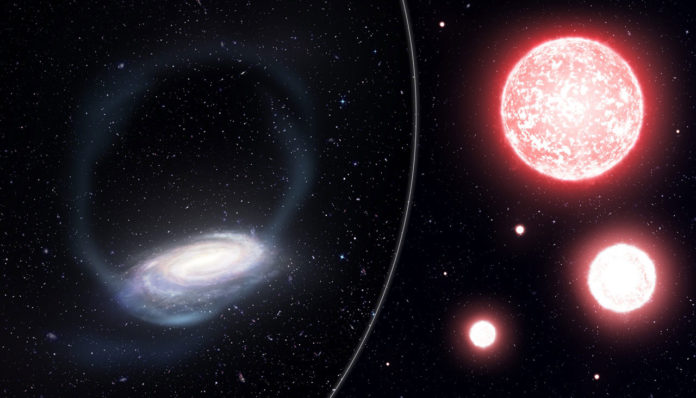An international team of astronomers, including Lowell Observatory, recently made a mindblowing discovery of shredded ‘globular cluster’ that lies in the Phoenix constellation.
They have discovered a stream of early universe stars that was torn apart by our galaxy, the Milky Way, more than two billion years ago.
The stars in this galactic archaeological have much lower quantities of heavier elements than in other such clusters.
Milky way is home to about 150 globular clusters, each a ball of a million or so stars that orbit in the Galaxy’s tenuous stellar halo. These globular clusters are old and have witnessed the growth of the Milky Way over billions of years.
The discovery was made using the Anglo-Australian Telescope in outback New South Wales. Astronomers also measured the speeds of a stream of stars in the Phoenix constellation, revealing them to be remnants of a globular cluster that was pulled apart by the gravity of the Milky Way about two billion years ago.
Zhen Wan, University of Sydney Ph.D. student, said, “Once we knew which stars belonged to the stream, we measured their abundance of elements heavier than hydrogen and helium; something astronomers refer to as metallicity. We were really surprised to find that the Phoenix Stream has very low metallicity, making it distinctly different from all of the other globular clusters in the Galaxy.”
Stars in other globular systems are enriched with heavier elements forged in earlier generations of stars. Current formation theories suggest that this dependence on previous stars means that no globular cluster should be found unenriched and that there is a minimum metallicity ‘floor’ below which no cluster can form.
But the metallicity of the Phoenix Stream progenitor sits well below this minimum, posing a significant problem for ideas of globular cluster origins.
Dr. Kyler Kuehn, one of the founders of the S5 collaboration, said, “We can trace the lineage of stars by measuring the different types of chemical elements we detect in them, much like we can trace a person’s connection to their ancestors through their DNA. The most interesting thing about the remains of this cluster is that its stars have a much lower abundance of these elements than any others we have seen. It’s almost like finding someone with DNA that doesn’t match any other person, living or dead. That leads to some fascinating questions about the cluster’s history that we’re missing.”
Professor Geraint Lewis from the University of Sydney said, “As yet, there is no clear explanation for the origins of the Phoenix Stream progenitor cluster and where it sits in the evolution of galaxies remains unclear. There is plenty of theoretical work left to do. There are now many new questions for us to explore how galaxies and globular clusters form, which is incredibly exciting.”
Journal Reference:
- Wan, Z., Lewis, G.F., Li, T.S. et al. The tidal remnant of an unusually metal-poor globular cluster. Nature 583, 768–770 (2020). DOI: 10.1038/s41586-020-2483-6
